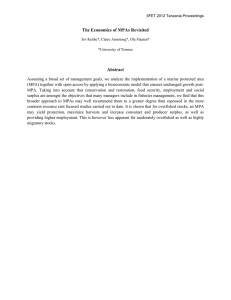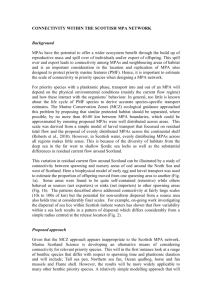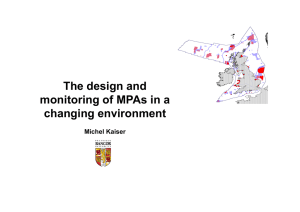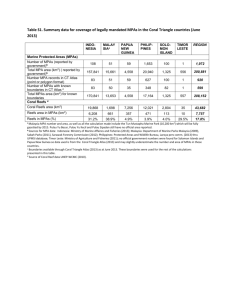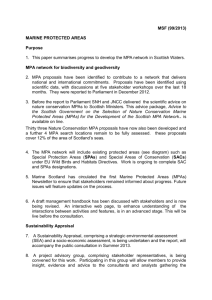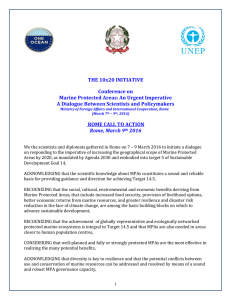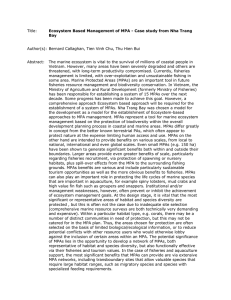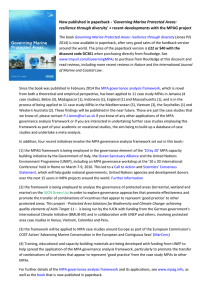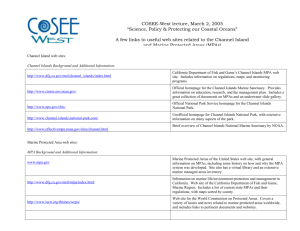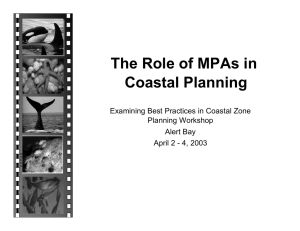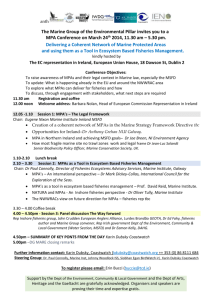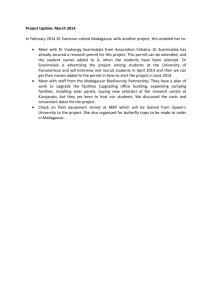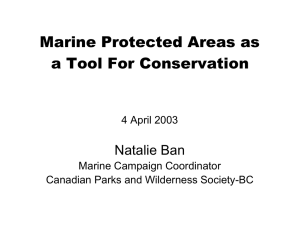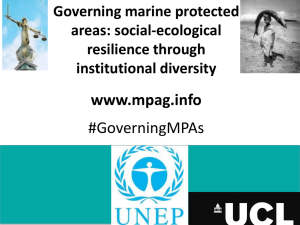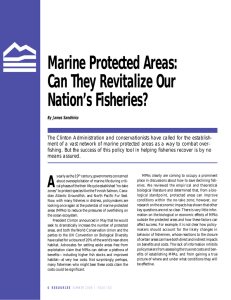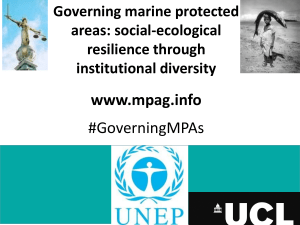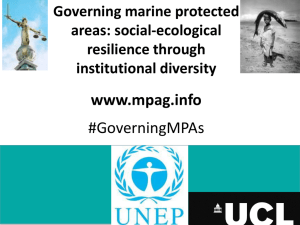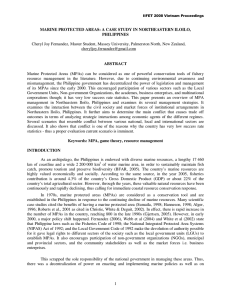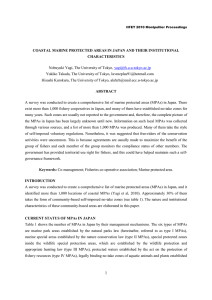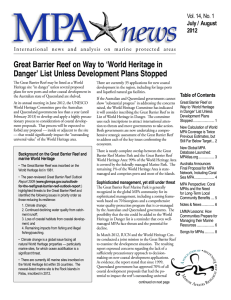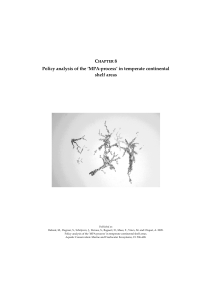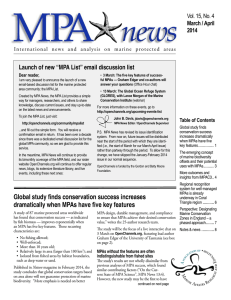Estimating an efficient spatial arrangement for the future network of
advertisement
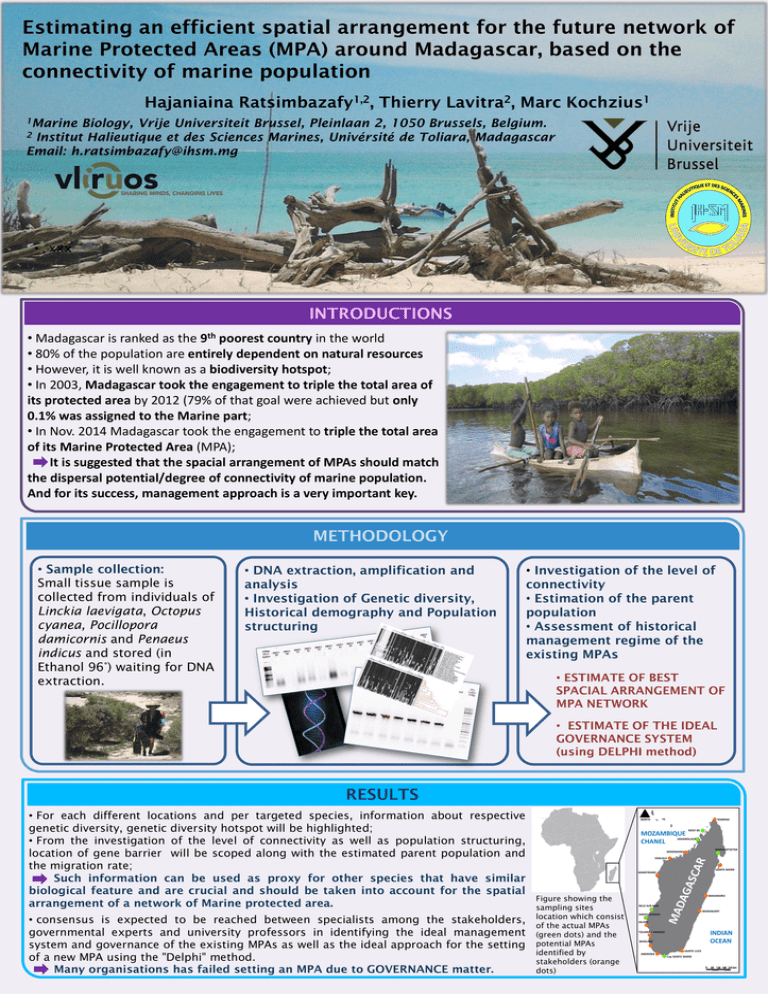
Estimating an efficient spatial arrangement for the future network of Marine Protected Areas (MPA) around Madagascar, based on the connectivity of marine population Hajaniaina Ratsimbazafy1,2, Thierry Lavitra2, Marc Kochzius1 1Marine Biology, Vrije Universiteit Brussel, Pleinlaan 2, 1050 Brussels, Belgium. 2 Institut Halieutique et des Sciences Marines, Univérsité de Toliara, Madagascar Email: h.ratsimbazafy@ihsm.mg • xxx INTRODUCTIONS • Madagascar is ranked as the 9th poorest country in the world • 80% of the population are entirely dependent on natural resources • However, it is well known as a biodiversity hotspot; • In 2003, Madagascar took the engagement to triple the total area of its protected area by 2012 (79% of that goal were achieved but only 0.1% was assigned to the Marine part; • In Nov. 2014 Madagascar took the engagement to triple the total area of its Marine Protected Area (MPA); It is suggested that the spacial arrangement of MPAs should match the dispersal potential/degree of connectivity of marine population. And for its success, management approach is a very important key. METHODOLOGY • Sample collection: Small tissue sample is collected from individuals of Linckia laevigata, Octopus cyanea, Pocillopora damicornis and Penaeus indicus and stored (in Ethanol 96°) waiting for DNA extraction. • DNA extraction, amplification and analysis • Investigation of Genetic diversity, Historical demography and Population structuring • Investigation of the level of connectivity • Estimation of the parent population • Assessment of historical management regime of the existing MPAs • ESTIMATE OF BEST SPACIAL ARRANGEMENT OF MPA NETWORK • ESTIMATE OF THE IDEAL GOVERNANCE SYSTEM (using DELPHI method) RESULTS • For each different locations and per targeted species, information about respective genetic diversity, genetic diversity hotspot will be highlighted; • From the investigation of the level of connectivity as well as population structuring, location of gene barrier will be scoped along with the estimated parent population and the migration rate; Such information can be used as proxy for other species that have similar biological feature and are crucial and should be taken into account for the spatial arrangement of a network of Marine protected area. • consensus is expected to be reached between specialists among the stakeholders, governmental experts and university professors in identifying the ideal management system and governance of the existing MPAs as well as the ideal approach for the setting of a new MPA using the "Delphi" method. Many organisations has failed setting an MPA due to GOVERNANCE matter. NORTH RAMENA NOSY-BE MOZAMBIQUE SAHAMALAZA CHANEL MAROANTSETRA MARIARANO SOALALA SAINTE-MARIE MAINTIRANO Figure showing the sampling sites location which consist of the actual MPAs (green dots) and the potential MPAs identified by stakeholders (orange dots) MAHANORO BELO SUR MER MANANJARY ANDAVADOAKA SALARY INDIAN OCEAN TOLIARA / ANAKAO BEHELOKE SAINTE LUCE ANDROKA Cap SAINTE MARIE
